The first tram lines in Budapest were not numbered. The different routes were simply indicated through coloured discs and inscriptions. However, by 1910 fifty different destinations had sprung up around the city, meaning passengers had to remember more colours and signals than could generally be expected. As a result, line numbers were introduced in the same year.
The change was requested by the Ministry of Trade, leading relevant authorities to force transport companies to introduce new signs, citing that the old signs made it difficult for the public to find their way.
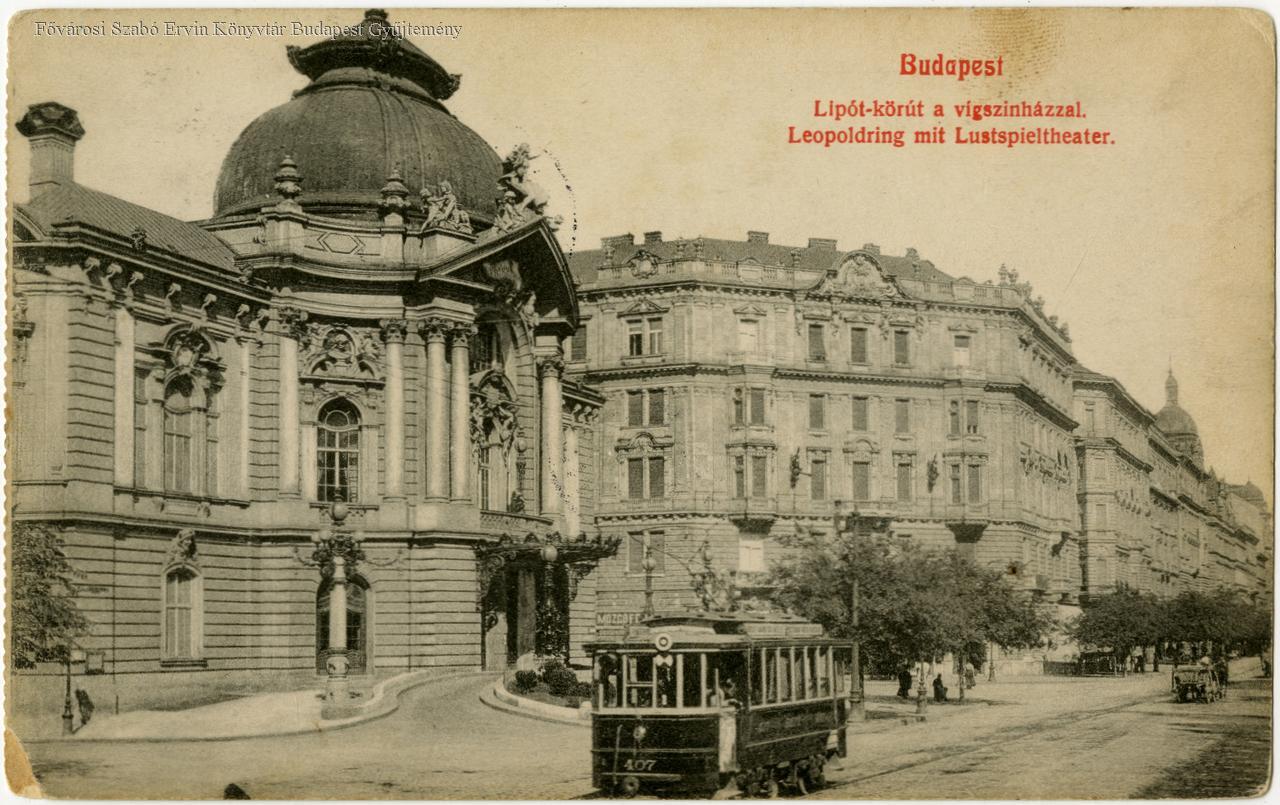
Tram with a coloured disc in front of the Vígszínház (Photo: FSZEK Budapest Collection)
According to a decree penned by the Minister of Trade, circular brackets with electric illumination were to be fitted at both ends of the trams. The numbers (or letters) were cut into black tin sheets and were clearly day and night. The regulations required that the numbers be 30 centimetres tall. The route number also had to be displayed on the side of all tram cars.
By introducing line numbering – which was broadly used abroad by the time – was expected to increase passenger comfort by ensuring the routes were easily discernible both night and day. However, things did not go easily, as seen in an article published in the 21 October 1910 issue of Pesti Hírlap:
"Companies were unable to comply with the requirements by the first deadline and asked for more time, which was given to them. However, it seems that they are not ready for the new deadline either and that the travelling public will have to wait even longer for numbered lines. Readers can already see what these numbers will look like and how they will change transportation, as they can be seen on some trams. However, we fear that it will be a long time before the new system is fully operational. There may be many people in their fifties today, who never see the completion of the new order."
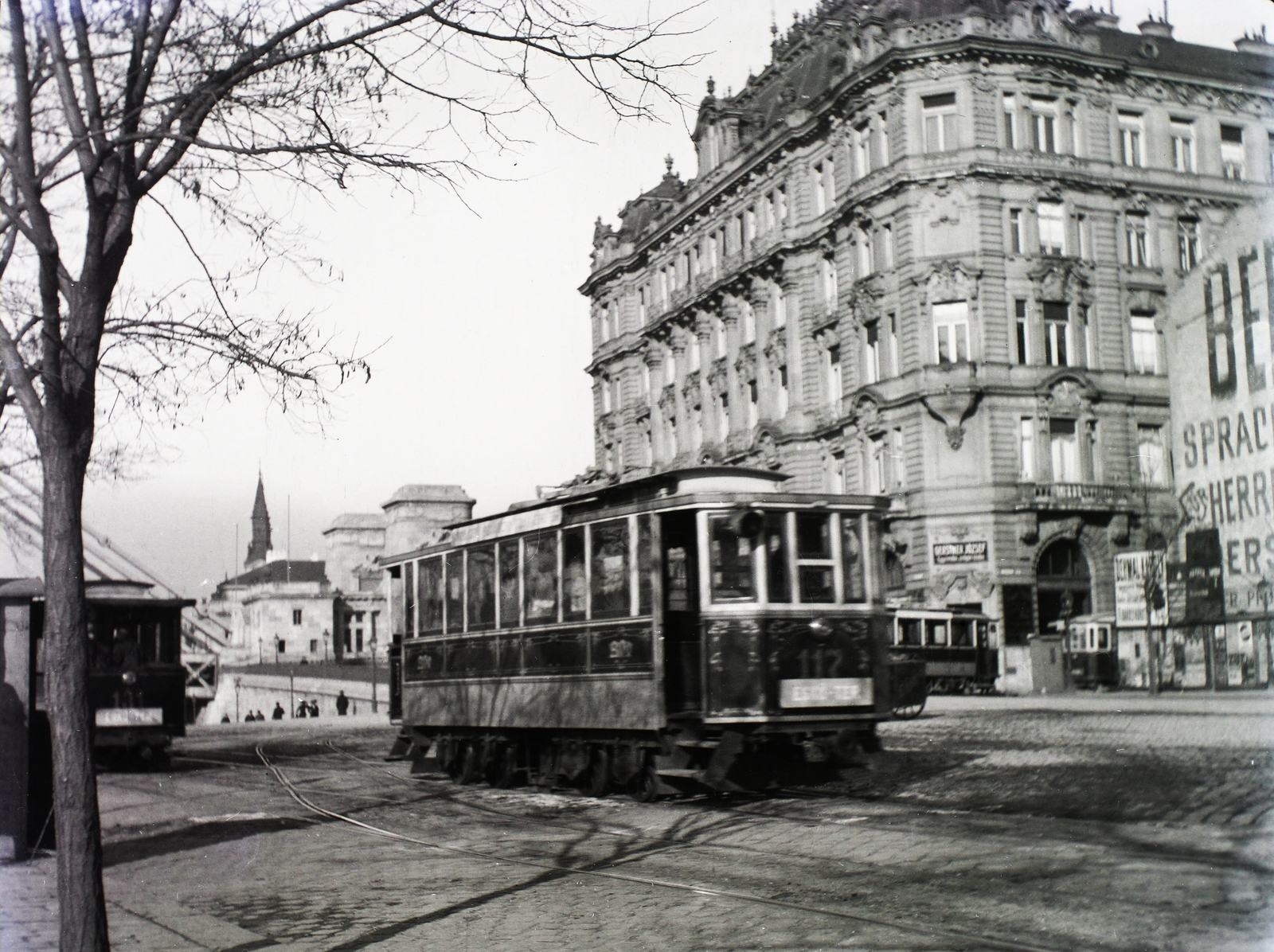
Tram near the Elizabeth Bridge in 1907 (Photo: Fortepan / ID: 86299)
Trams were first numbered from 1 to 63, indicating 63 different routes. BKVT, that is, the Budapest Road Railway Company, was given the odd numbers, which ran on 29 lines. The competing company, BVVV, i.e. Budapest Electric Urban Railway, used the even numbers between 4–34. The third tram company in the capital, the Budapest-Újpest-Rákospalotai Tramway, was given letter signals.
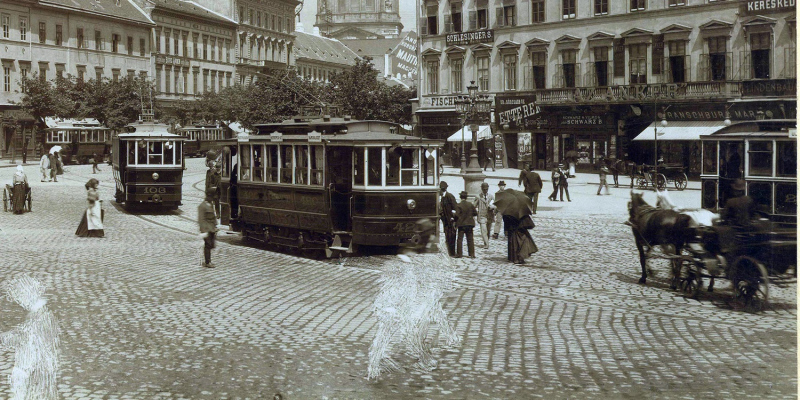
Trams with signal discs in Budapest on a photo by György Klösz (Photo: Fortepan/Budapest Archives. Reference No.: HU.BFL.XV.19.d.1.07.109)
The trams of the two large companies also sped through the cities in different liveries. BVVV cars were yellow and white, while BKVT cars were brown. The vehicle fleet was diverse, and various kinds of rolling stock appeared on the rails. Old models were constantly modernized, rebuilt, changed. At that time, many trams still received power through a third rail – their pantographs reached underground. However, overhead lines had already appeared.
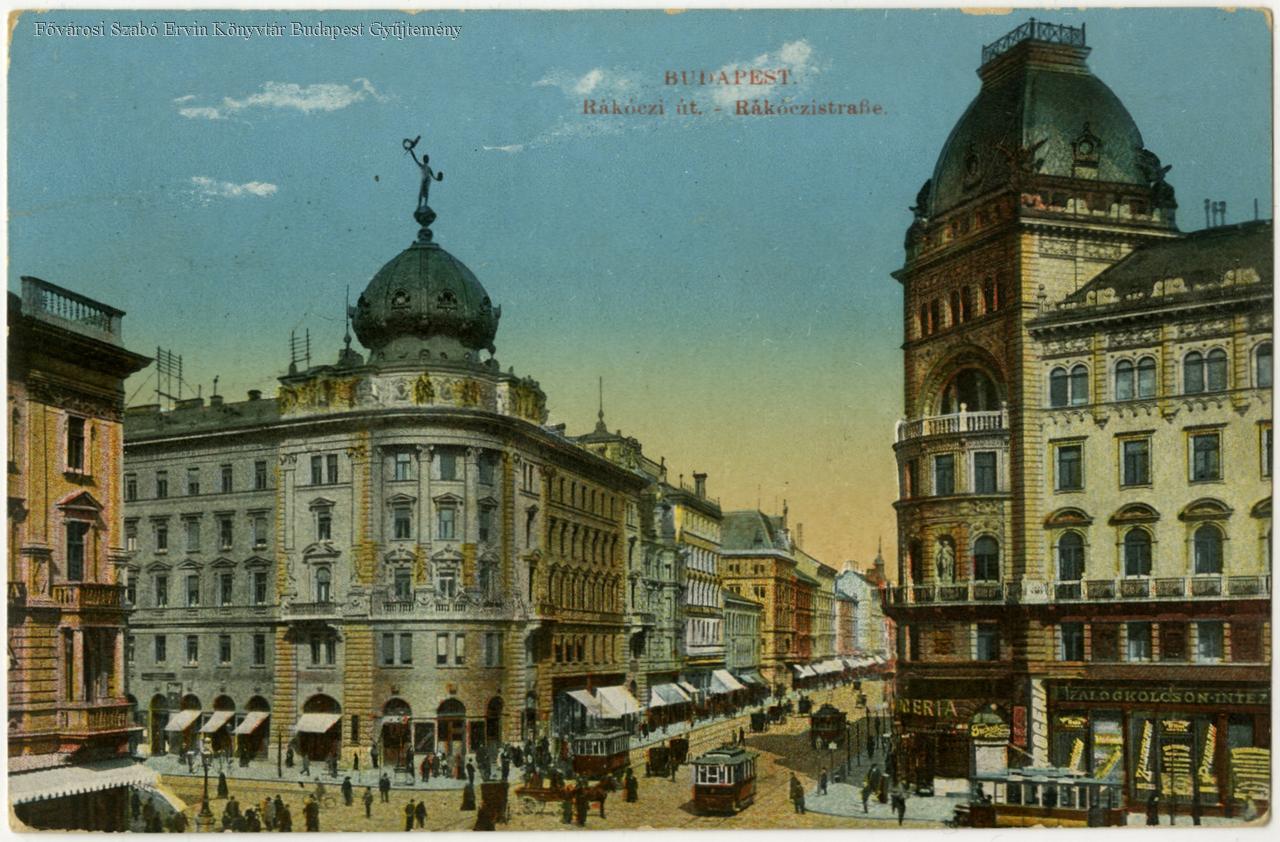
Tram traffic at EMKÉ, trams of different colours clearly visible on a postcard circa 1910 (Photo: FSZEK Budapest Collection)
However, the new system was not implemented smoothly at first. Commuters experienced several disruptions in the early days, prompting the Pesti Napló to publish an article decrying the negligent work of conductors and tram drivers on 2 February 1911. The article summarizes the problems experienced by passengers:
“Some cars display the wrong number. Certain trams have two numbers because they travel in two directions. However, car drivers and conductors care about everything but displaying the right number on the car. They display the number five when the tram is travelling in the direction indicated by seven, prompting passengers to board the wrong vehicle through no fault of their own and buy two tickets.
Although the numbering of trams has changed over time, some route numbers have stood the test of time, especially on lines where the tracks have remained unchanged. Number 6 is one of these, which already ran along the outer ring road between Nyugati Railway Station and Boráros Square. Tram 59 is another, as it already climbed up to Farkasrét at the time.
Of course, the number used to denote most routes has changed – some lines have ended up in different areas completely. The original No. 1 line ran from Újpest to Erzsébet Királyné Road via Nyugati Railway Station and Rákóczi Road. Route 61 ran a ring route on Krisztina Boulevard – Déli Railway Station – Ferenc József Bridge – Múzeum Boulevard – Margit Bridge – Krisztina Boulevard. Meanwhile, tram 49 connected City Hall to the Cogwheel railway.
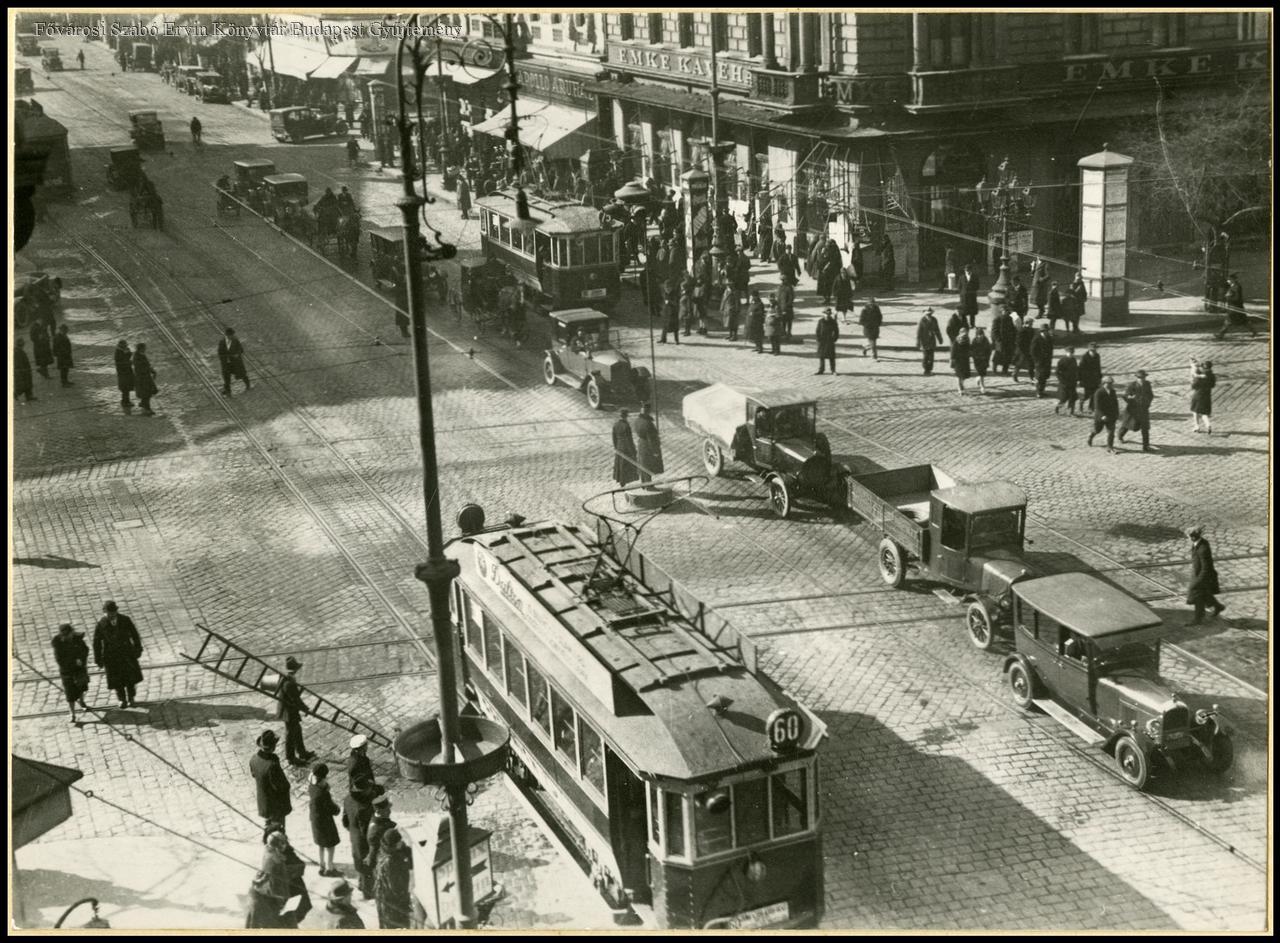
By the 1920s, numbered trams were the norm (Photo: FSZEK Budapest Collection)
The tram was an incredibly popular means of transportation at the time. BKVT vehicles carried 100 million passengers in 1910, while BVVV carried “only” half, 48 million passengers. The third, smallest company, BURV, carried 7.4 million passengers in 1910.
Trams usually ran from 6 a.m. to 11 p.m. and followed each other frequently. Lines along the boulevards were the busiest, with tram soften running only 3 minutes apart. Even the quieter lines saw a car every 15 minutes.
Traffic continued to increase through the following years and decades, as trams practically held a monopoly on motorized public transport until buses appeared. The early glitches in the numbering system were slowly eliminated.
Cover photo: Tram 6 on the outer ring road in 1919. During the Hungarian Soviet Republic, the proletarian dictatorship's motto was also painted on the side of trams. The reproduction was created by Tamás Fényes, a photojournalist at the MTI, on 20 November 1957 (MTI Photo: Reproduction)

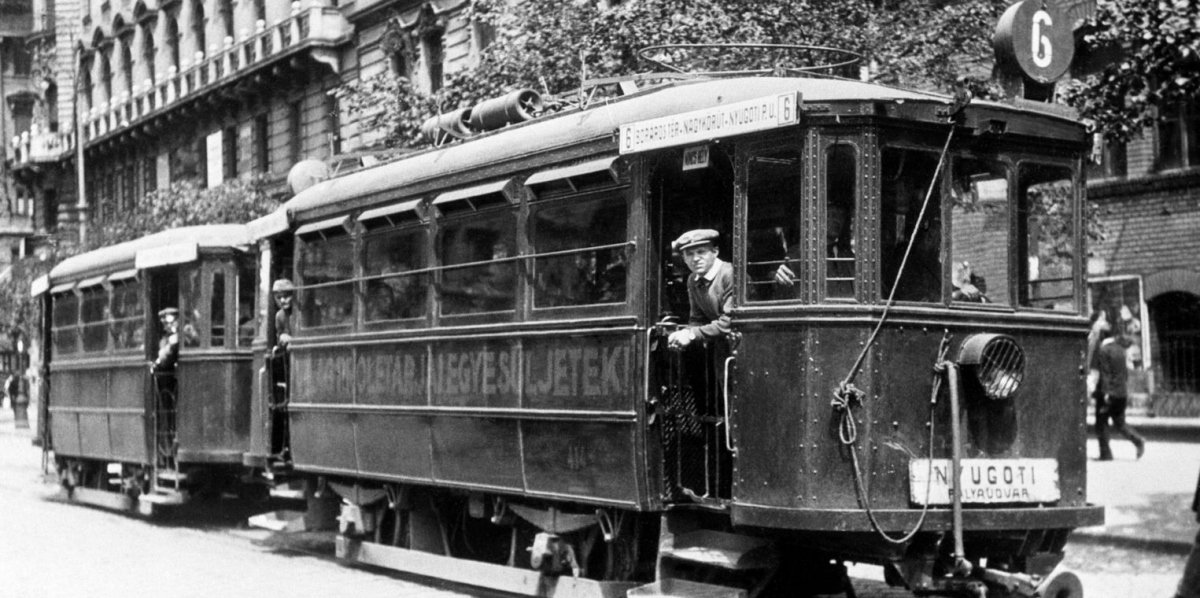







Hozzászólások
Log in or register to comment!
Login Registration